Abstract
Human group-specific component (Gc) is the plasma transport protein for vitamin D; in addition, polymorphic electrophoretic variants of Gc are found in all human populations. Because of its physiologic importance and in view of the extensive genetic variation at the Gc locus, we have determined the heritability of quantitative variation in Gc by comparing a series of monozygotic (MZ) and dizygotic (DZ) twins of known Gc genotype. The series included 31 MZ twin pairs, 13 DZ twin pairs, and 45 unrelated controls. Since Gc concentration is increased by estrogens, pregnant women and women taking oral contraceptives were excluded. We found no age-related differences in Gc concentration or differences between males and females, but the concentrations of Gc in the three electrophoretically determined genotypes were significantly different from each other. Using classical methods of heritability analysis, the overall heritability of variation in Gc concentration is approximately 70%. Heritability in males is greater than in females, probably reflecting the additional environmental effect of estrogens in women. To determine if the differences in Gc concentration between the three genotypes explain the high heritability, a new variance decomposition procedure was developed following classical methods in quantitative genetics. Application of this method suggests that 19% of the total variation in Gc concentration, combining both sexes, is due to electrophoretic differences between individuals (30% in females and 20% in males). Thus, the genetic component of variation in Gc concentration can be decomposed into a major gene component--the result of electrophoretic variation at the structural locus--and a second, unexplained, polygenic component.
Full text
PDF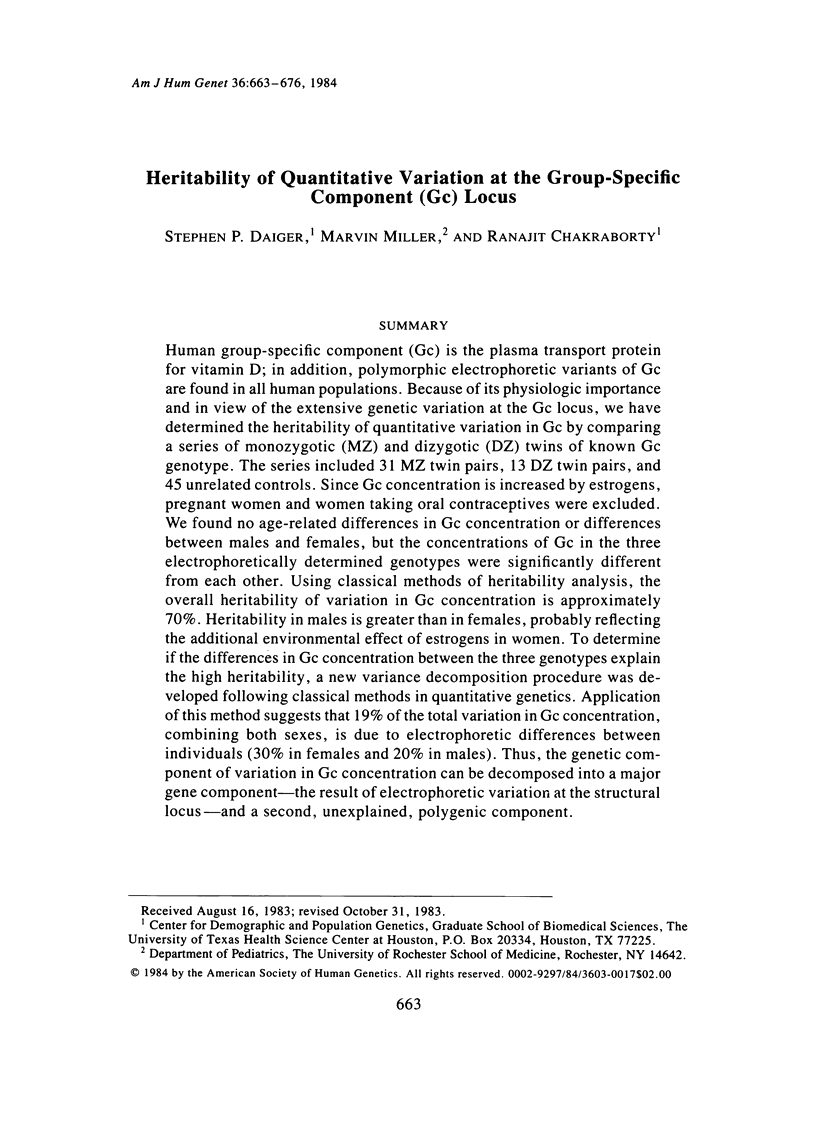
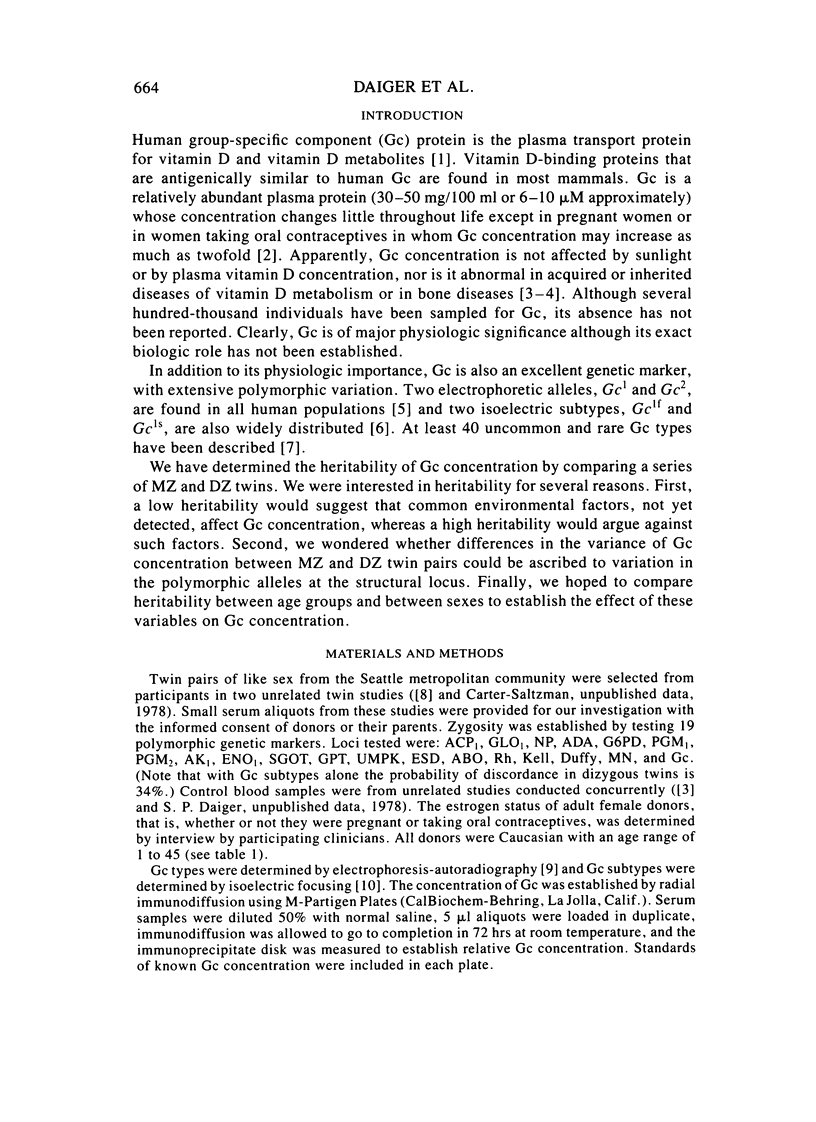
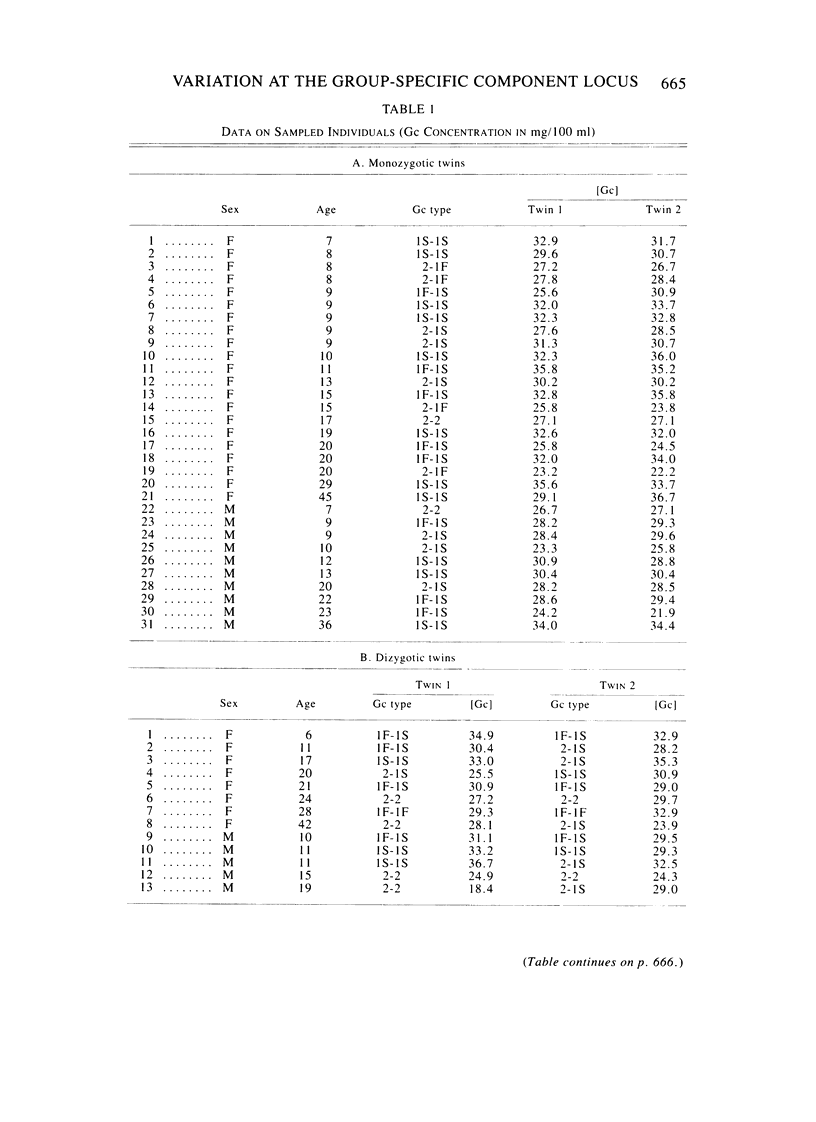
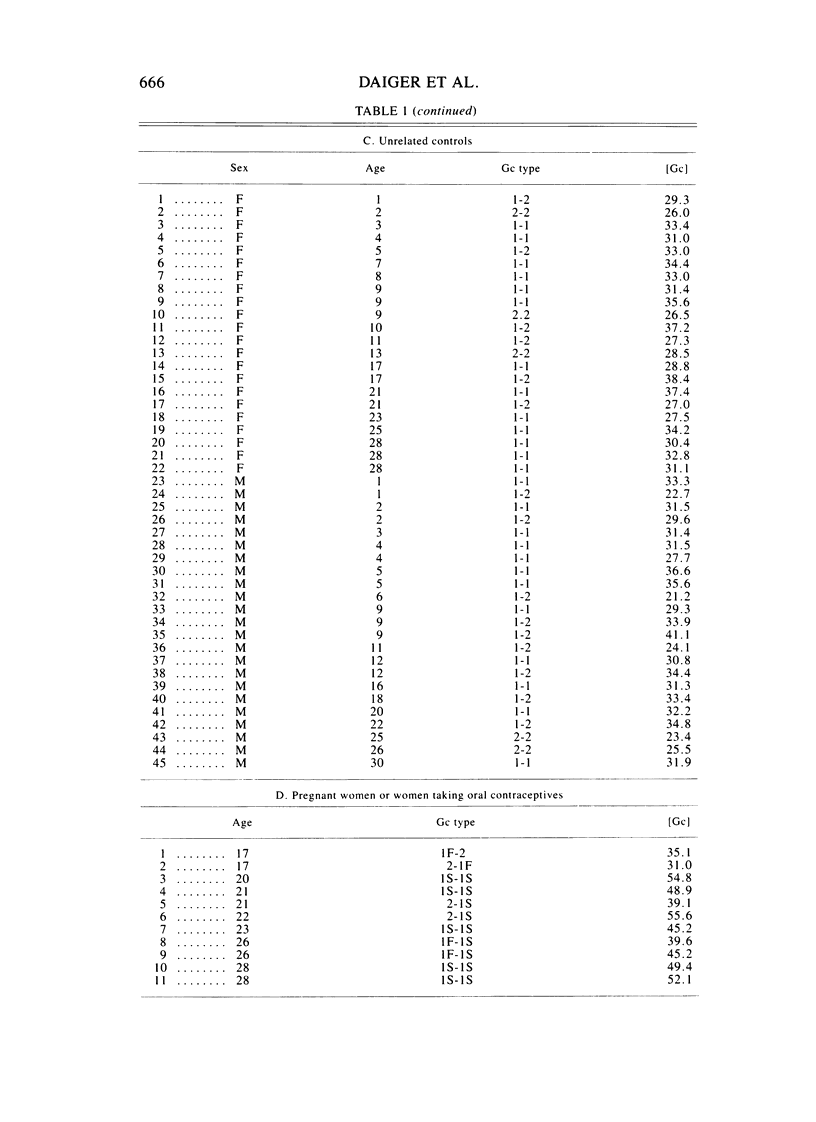
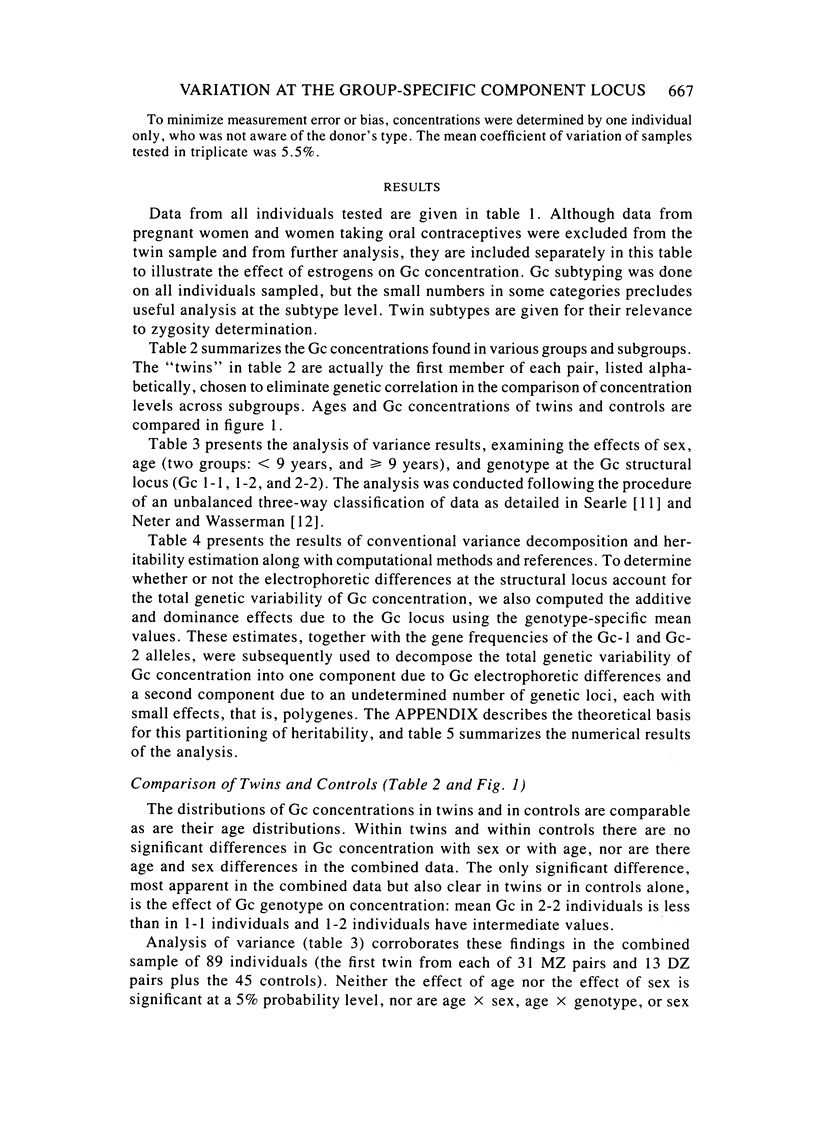
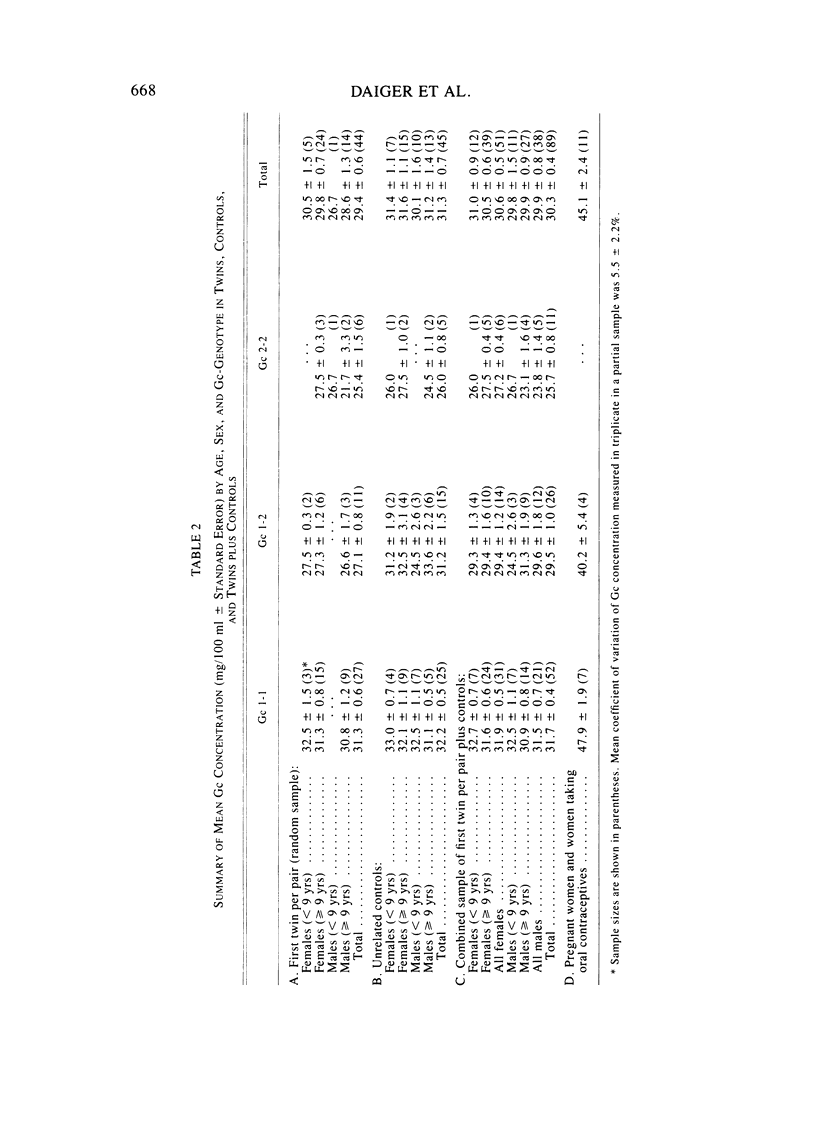
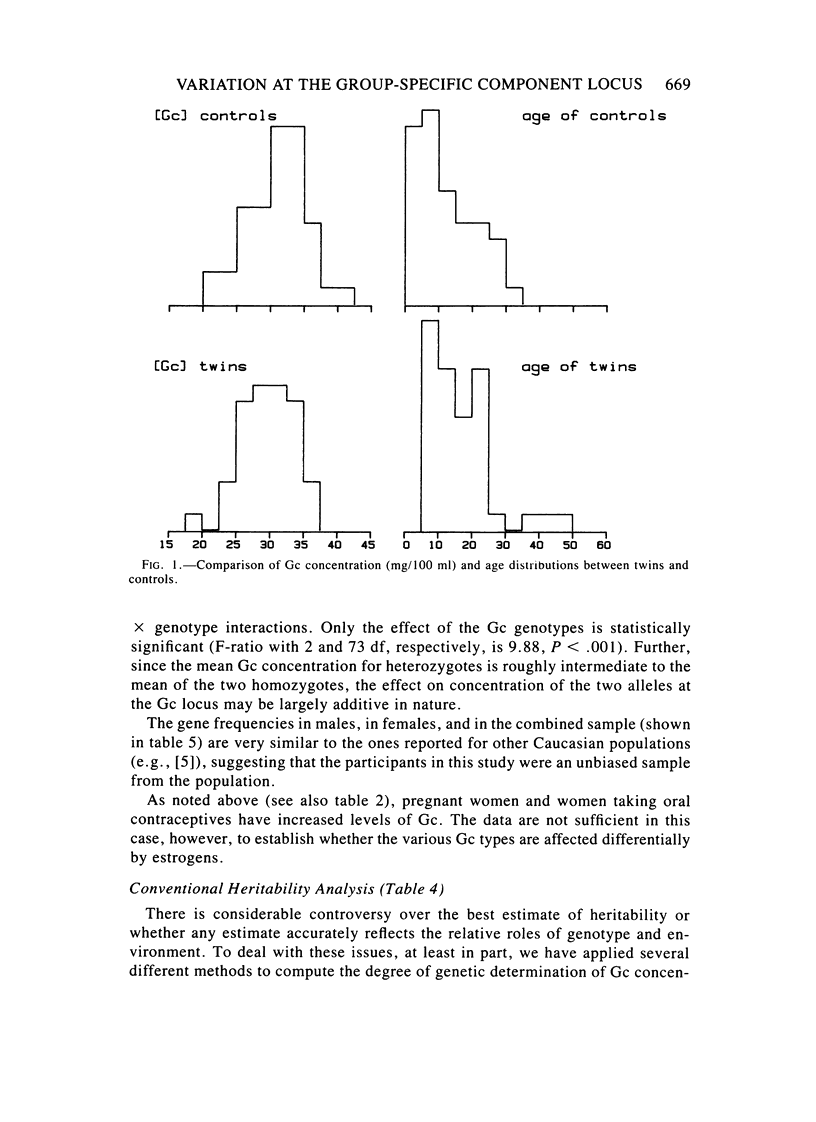
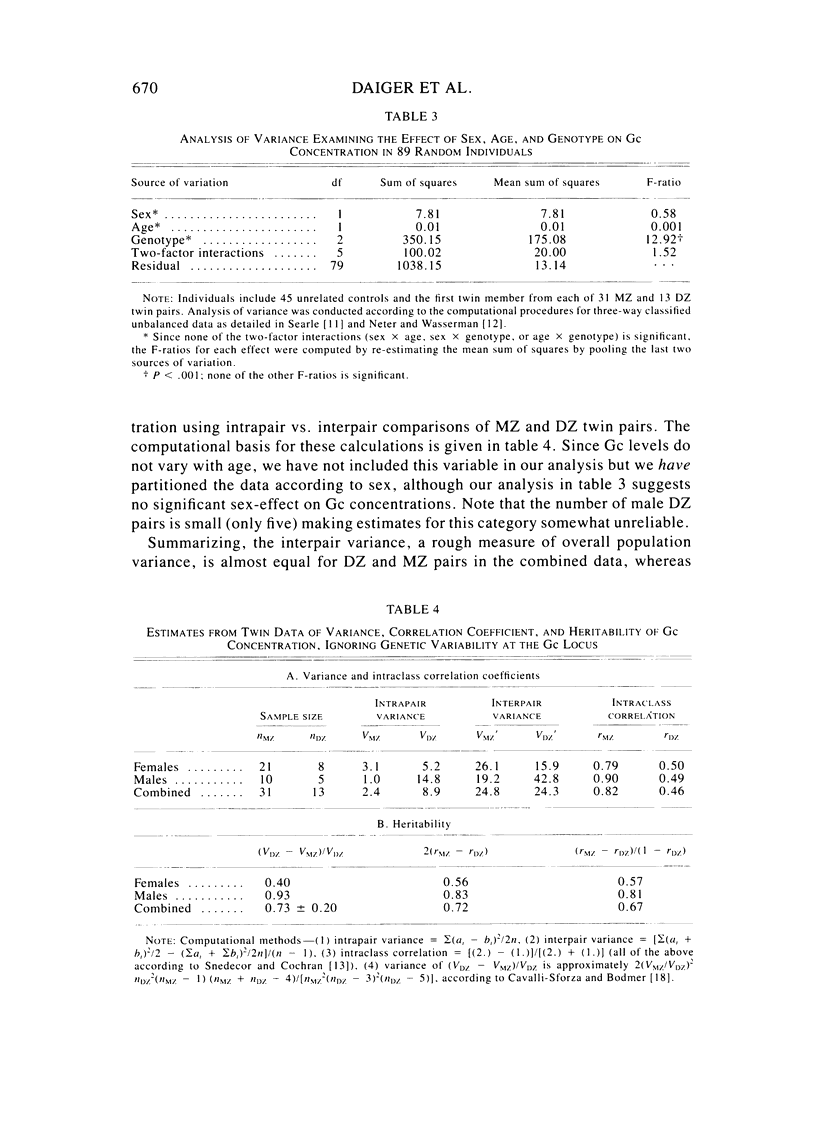
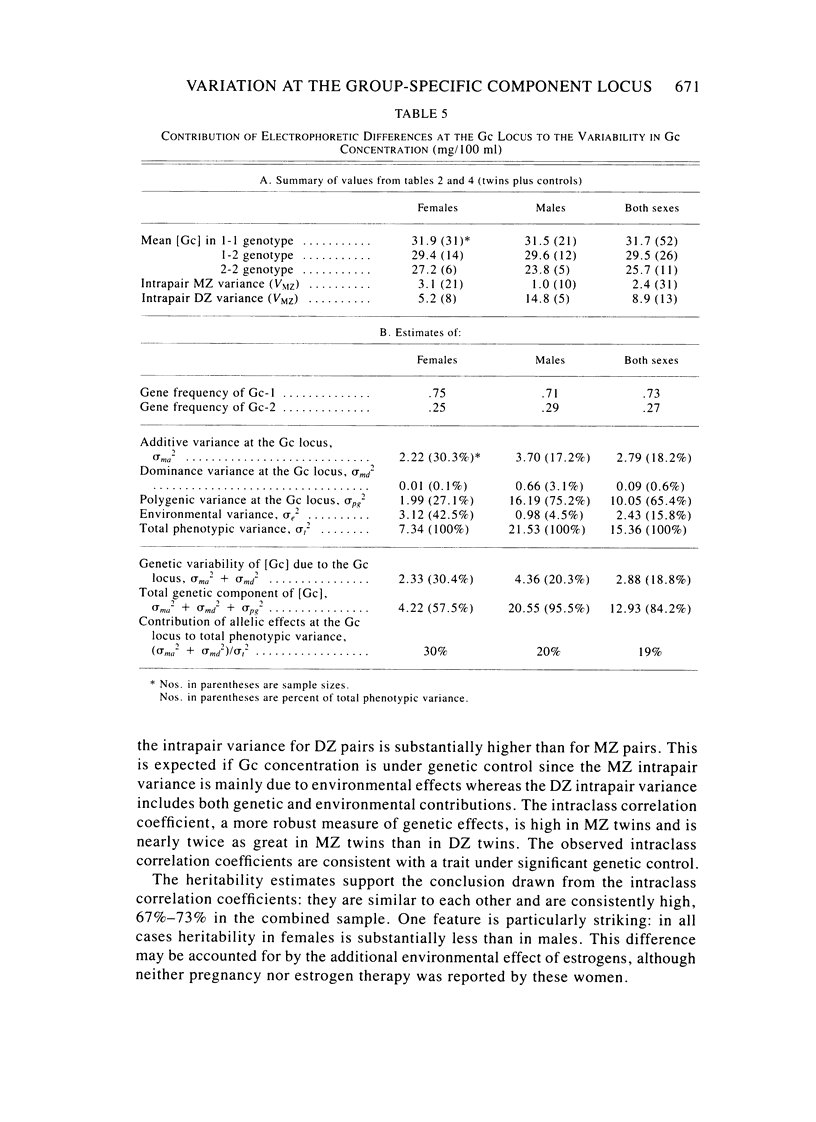
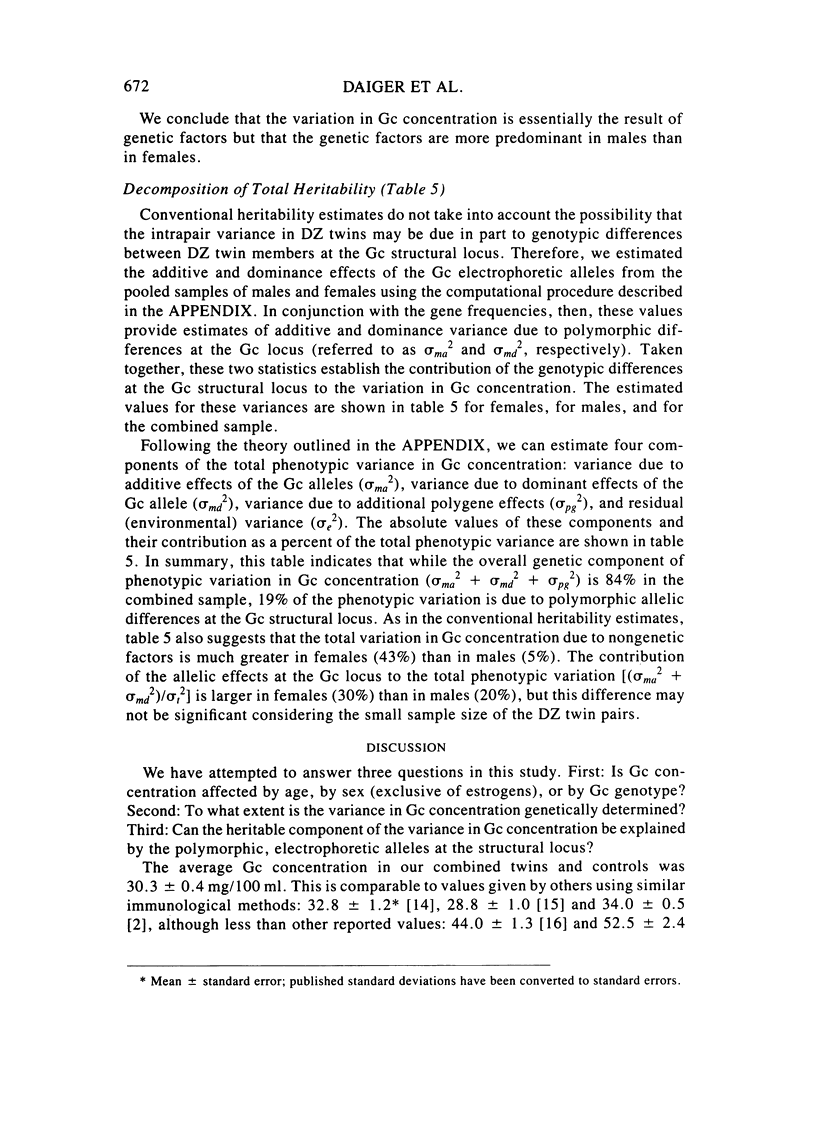
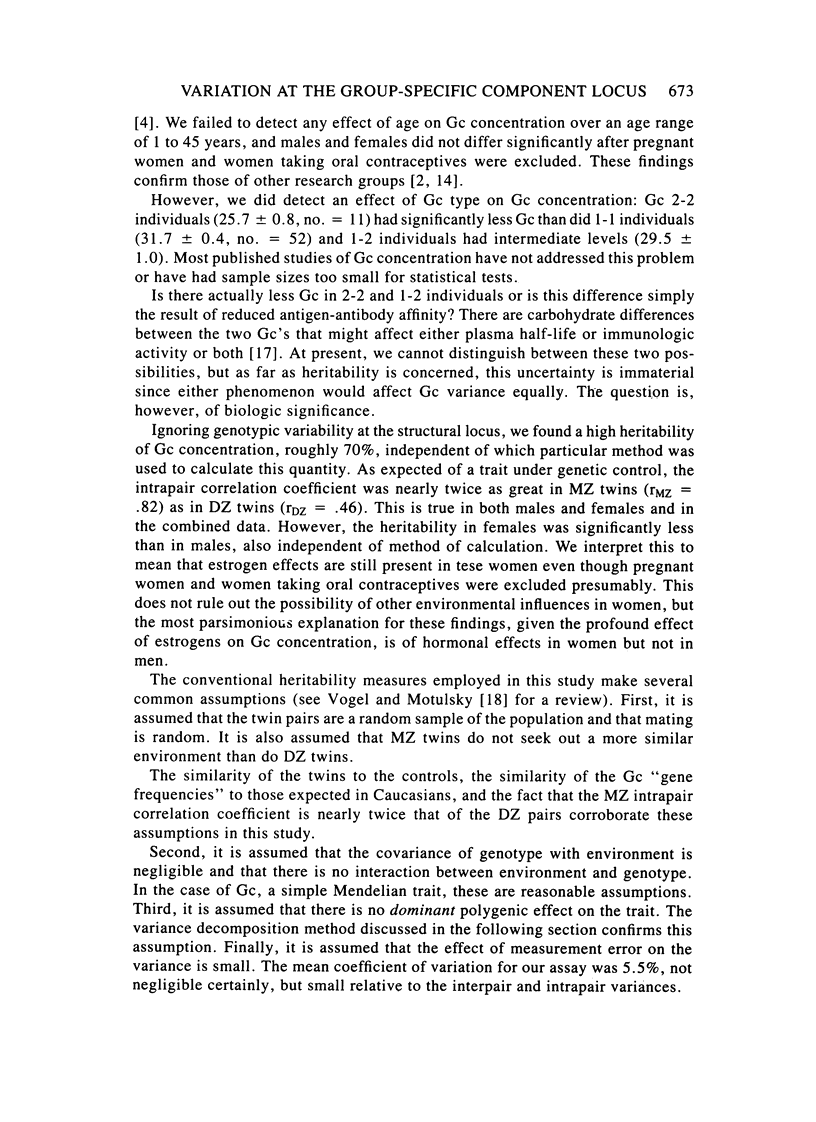
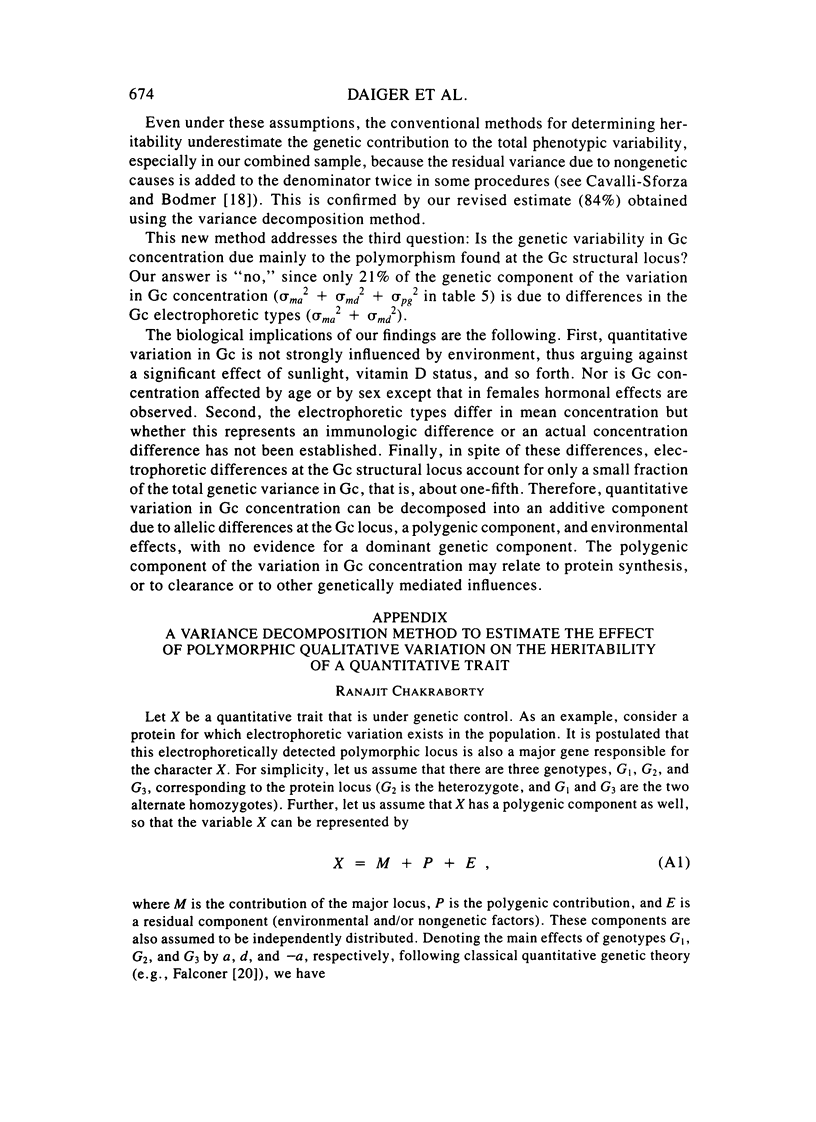
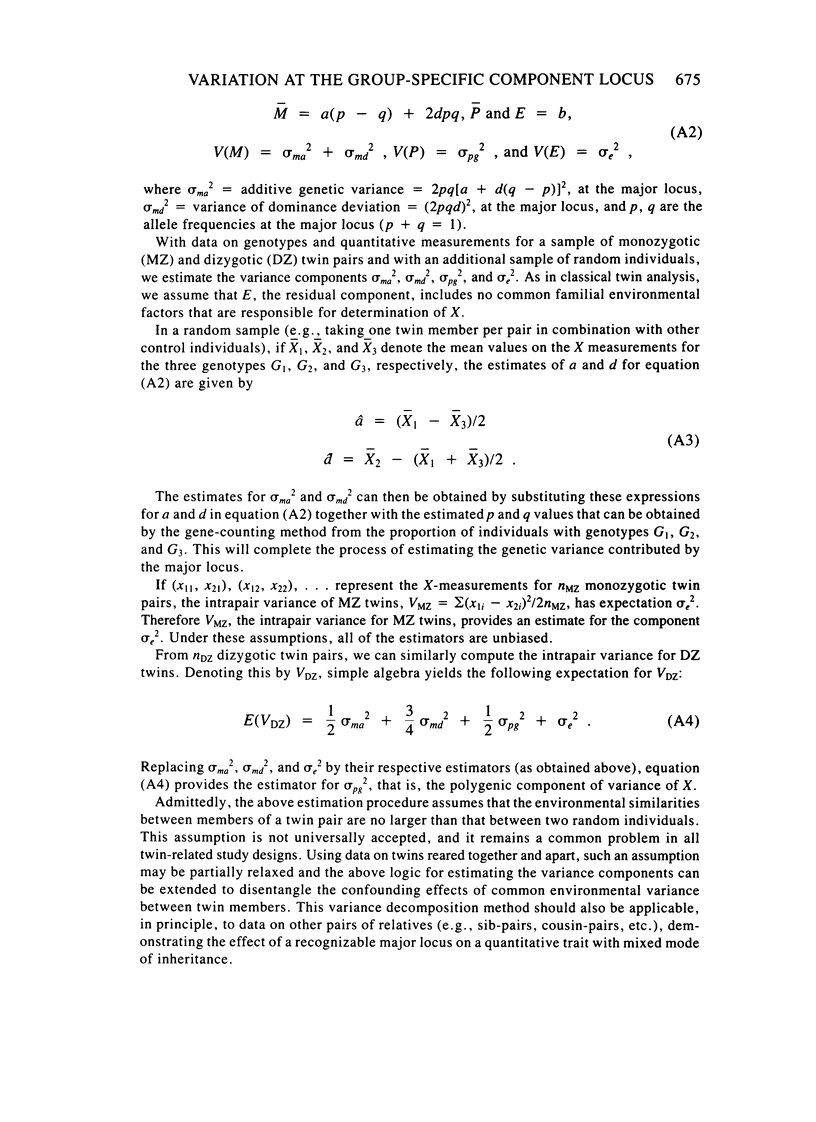
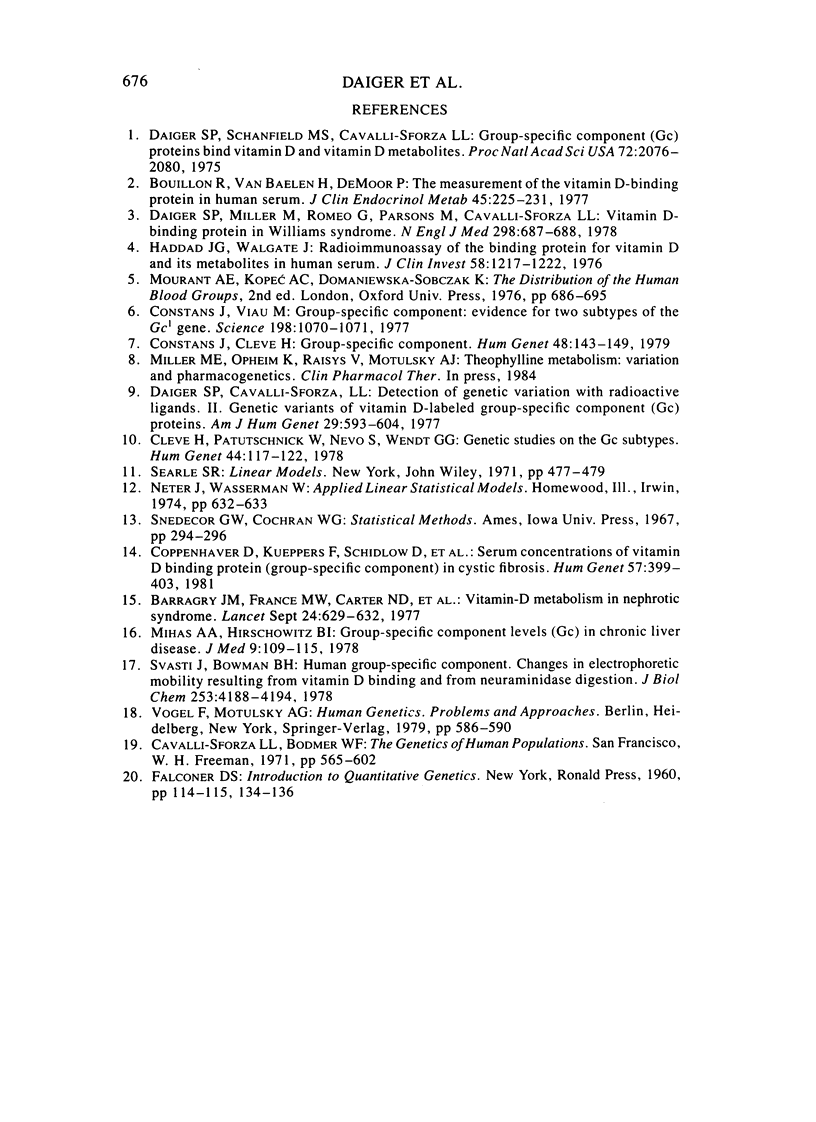
Selected References
These references are in PubMed. This may not be the complete list of references from this article.
- Barragry J. M., France M. W., Carter N. D., Auton J. A., Beer M., Boucher B. J., Cohen R. D. Vitamin-D metabolism in nephrotic syndrome. Lancet. 1977 Sep 24;2(8039):629–632. doi: 10.1016/s0140-6736(77)92498-9. [DOI] [PubMed] [Google Scholar]
- Bouillon R., van Baelen H., de Moor P. The measurement of the vitamin D-binding protein in human serum. J Clin Endocrinol Metab. 1977 Aug;45(2):225–231. doi: 10.1210/jcem-45-2-225. [DOI] [PubMed] [Google Scholar]
- Cleve H., Patutschnick W., Nevo S., Wendt G. G. Genetic studies on the Gc subtypes. Hum Genet. 1978 Oct 31;44(2):117–122. doi: 10.1007/BF00295404. [DOI] [PubMed] [Google Scholar]
- Constans J., Cleve H. Group-specific component. Report on the First International Workshop, Collège de France--July 27-28, 1978--Paris. Hum Genet. 1979 Apr 27;48(2):143–149. doi: 10.1007/BF00286897. [DOI] [PubMed] [Google Scholar]
- Constans J., Viau M. Group-specific component: evidence for two subtypes of the Gc1 gene. Science. 1977 Dec 9;198(4321):1070–1071. doi: 10.1126/science.73222. [DOI] [PubMed] [Google Scholar]
- Coppenhaver D., Kueppers F., Schidlow D., Bee D., Isenburg J. N., Barnett D. R., Bowman B. H. Serum concentrations of vitamin D-binding protein (group-specific component) in cystic fibrosis. Hum Genet. 1981;57(4):399–403. doi: 10.1007/BF00281693. [DOI] [PubMed] [Google Scholar]
- Daiger S. P., Cavalli-Sforza L. L. Detection of genetic variation with radioactive ligands. II. Genetic variants of vitamin D-labeled group-specific component (Gc) proteins. Am J Hum Genet. 1977 Nov;29(6):593–604. [PMC free article] [PubMed] [Google Scholar]
- Daiger S. P., Miller M., Romeo G., Parsons M., Cavalli-Sforza L. L. Vitamin-D-binding protein in the Williams syndrome and idiopathic hypercalcemia. N Engl J Med. 1978 Mar 23;298(12):687–688. [PubMed] [Google Scholar]
- Daiger S. P., Schanfield M. S., Cavalli-Sforza L. L. Group-specific component (Gc) proteins bind vitamin D and 25-hydroxyvitamin D. Proc Natl Acad Sci U S A. 1975 Jun;72(6):2076–2080. doi: 10.1073/pnas.72.6.2076. [DOI] [PMC free article] [PubMed] [Google Scholar]
- Haddad J. G., Jr, Walgate J. Radioimmunoassay of the binding protein for vitamin D and its metabolites in human serum: concentrations in normal subjects and patients with disorders of mineral homeostasis. J Clin Invest. 1976 Nov;58(5):1217–1222. doi: 10.1172/JCI108575. [DOI] [PMC free article] [PubMed] [Google Scholar]
- Mihas A. A., Hirschowitz B. I. Group-specific component [Gc] levels in chronic liver disease. J Med. 1978;9(2):109–115. [PubMed] [Google Scholar]
- Svasti J., Bowman B. H. Human group-specific component. Changes in electrophoretic mobility resulting from vitamin D binding and from neuraminidase digestion. J Biol Chem. 1978 Jun 25;253(12):4188–4194. [PubMed] [Google Scholar]


